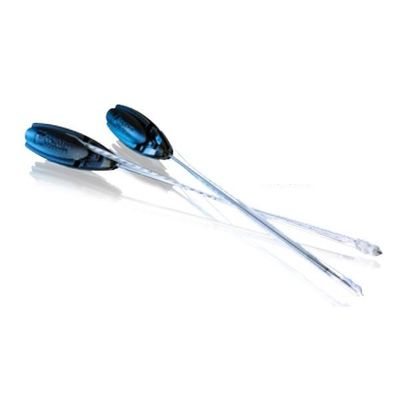

- Home
- Companies
- CONMED Corporation
- Products
- Y-Knot - Model PRO RC - Self-Punching ...

Y-Knot - Model PRO RC - Self-Punching All-Suture Anchor
With strong fixation, less bone removal and a simple, self-punching technique, the Y-Knot® RC helps overcome the trade-offs of other rotator cuff fixation methods. The first self-punching all-suture anchor available, Y-Knot® RC anchors can help streamline procedures with a fast-efficient technique that eliminates the need to create and find a pilot hole. In addition to requiring less bone removal than larger traditional anchors, the small 2.8mm footprint provides placement and fixation advantages when bone real estate is limited, especially during revisions. The versatile Y-Knot® PRO RC can be used for various procedures in several joint spaces.
Y-Knot® PRO RC
The Y-Knot® PRO combines our Y-Knot® anchor with cleatless suture release technology. The Y-Knot® PRO:
- Eliminates the need for uncleating sutures after implanting the anchor by providing a more efficient delivery system.
- Available on all Y-Knot® RC anchors.
Y-Knot® RC with Hi-Fi® Ribbon
Hi-Fi® Ribbon is a 1.3mm wide, flat, tie-able tape. Ribbon is:
- 2X wider than #2 suture for broader compression and increased tendon-to-bone interface
- 14.0% stronger than high-strength USP #2 suture1
- Smaller knot stacks than USP #2 suture2
Y-Knot® RC with Hi-Fi® Tape
Hi-Fi® Tape is:
- 69% less abrasive than the leading competitor when measuring tendon tear-through3
- Broader compression than #2 suture for increased tendon-to-bone interface
- More than twice as strong as #2 suture4
- Simplifies double-row repairs by eliminating need for medial knot tying
Y-Knot® RC with #2 Suture
#2 Hi-Fi® Suture is:
- A braided, non-absorbable suture for soft tissue repair designed to provide exceptional strength for knot tying while helping minimize tendon damage
- CONMED’s #2 Hi-Fi® Suture was shown to reduce mean cutting rate by over 50% when compared to FiberWire and FiberTape, which were more abrasive on the suture-tendon interface and led to higher tendon tear-through.5
Y-Knot® RC with Needles
Ideal for open procedures.
1Data on file: PDD1494993
2Data on file: TR17-01219
3Data on File TR16-787. Compared with FiberTape. TR16-787-1
4Data on file TR16-219.
5Deranlot J, Maurel N, Diop A, Nourissat G, et al. Abrasive Properties of Braided Polyblend Sutures in Cuff Tendon Repair: An in Vitro Biomechanical Study Exploring Regular and Tape Sutures. Arthroscopy 2014; 30:1569-73
